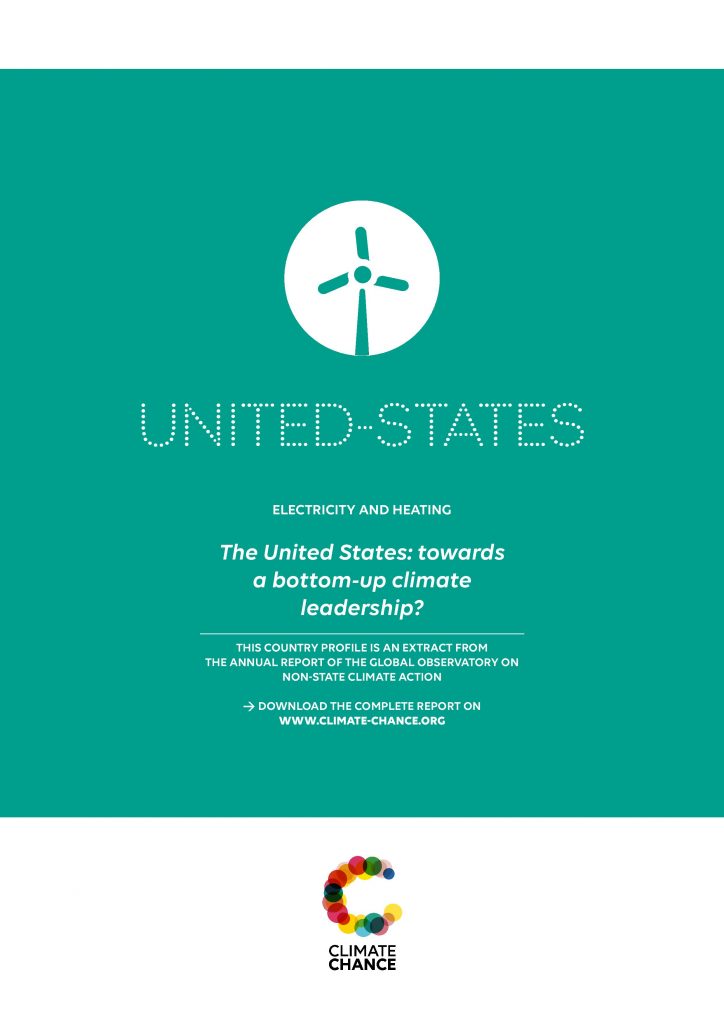The United States • Towards a bottom-up climate leadership?
The American power sector reveals the importance of non-state actors. We will conduct a three-part analysis of the recent evolution of CO2 emissions in the United States’ electrical sector and the role of different non-state actors.

2018
United States
Germán Bersalli • Research fellow, Univ. Grenoble Alpes, CNRS, INRA, Grenoble INP, GAEL
Introduction
The American power sector reveals the importance of non-state actors. In June 2017, the federal government announced the exit of the United States from the Paris Agreement, casting strong doubts about the country’s ability to continue the newly started decarbonisation of its economy. However, governors, mayors and CEOs of American companies reacted immediately. A few hours after the announcement from Trump’s government, an unprecedented coalition of now more than 2700 States, cities and companies joined behind the Paris Agreement under the slogan “We Are Still In”. How do these initiatives translate into concrete action at the level of States, cities and companies? Will they be sufficient to ensure a deep decarbonisation pathway of the American power sector? In order to provide answers, we will conduct a three-part analysis of the recent evolution of CO2 emissions in the United States’ electrical sector and the role of different non-state actors.
Contents
1 • The huge challenge of decarbonising the american electrical system
• Emissions from the electricity sector continue to fall
• The decline of coal continues thanks to the rise of natural gas and renewable energy
2 • The momentum of cities and states is opposed to the withdrawal of the federal government
• The huge challenge of decarbonising the American electrical system
• Emissions from the electricity sector continue to fall
• The decline of coal continues thanks to the rise of natural gas and renewable energy
3 • The role of businesses and citizens’ initiatives
• Companies integrate the climate dimension into their strategies
• The energy democracy movement
Conclusion
An analysis of the registered and quantified commitments of sub-national and non-state actors in the United States (America’s Pledge, 2018; Climate Action Tracker, 2018) suggests that if implemented, these commitments could lead to a reduction in emissions of 17 to 24% in 2025 compared to 2005 levels. While the federal government has significantly changed its climate policy – including the decision to leave the Paris Agreement –, the US climate leadership remains alive and well. It is a new kind of bottom-up leadership driven by the conviction of citizens, the leadership of cities and States as well as driven by the innovation capacity of its companies, making it possible not only to take concrete action now but also to lay the foundations for a future partnership with the federal government. In the coming years, the continuation of the decrease in CO2 emissions from the American power sector will tell whether the dynamics of the Federated States will be stronger than the federal desire to revive coal contrary to recent economic developments.


